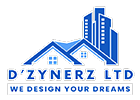STRUCTURAL ENGINEERING
We create cutting-edge structural steel designs that balance aesthetics, functionality, and safety. Our designs cater to a wide range of projects, from agriculture, commercial and residential buildings to large-scale infrastructure, ensuring that each structure meets or exceeds industry standards and client expectations, that includes,


Conceptual Design
Developing initial design concepts based on project requirements, including load-bearing capacities, aesthetic considerations, and functional needs.
Structural Analysis
Performing detailed analyses to determine the strength, stability, and behavior of steel structures under various load conditions, including dead loads, live loads, wind loads, and seismic forces.
Member Sizing
Calculating the appropriate sizes and types of steel members (beams, columns, trusses, etc.) to ensure structural integrity and efficiency while meeting design criteria and safety standards.
Connection Design
Designing and detailing connections between steel members, including bolted, welded, and riveted connections, to ensure proper load transfer and structural stability.
Material Specifications
Selecting suitable steel grades and coatings to meet project requirements, including considerations for durability, corrosion resistance, and environmental conditions.
Detail Drawings
Preparing detailed construction drawings and specifications, including dimensions, material types, and fabrication details, to guide the manufacturing and assembly of steel components.




Fabrication Coordination
Working closely with fabricators to ensure that steel components are produced according to design specifications and quality standards.
Erection Plans
Developing plans and procedures for the safe and efficient assembly and erection of steel structures on site, including considerations for handling, lifting, and alignment.
Load Testing
Conducting load tests, if required, to verify the performance and safety of the steel structure under actual loading conditions.
Compliance and Standards
Ensuring that the design adheres to relevant building codes, standards, and regulations, such as those provided by the American Institute of Steel Construction (AISC) or other applicable organizations.
Integration with Other Systems
Coordinating the steel design with other building systems, such as mechanical, electrical, and plumbing (MEP) systems, to ensure seamless integration and functionality.
Revisions and Optimization
Making design revisions as needed based on feedback from construction, fabrication, or client requirements, and optimizing the design for cost-efficiency and performance.


